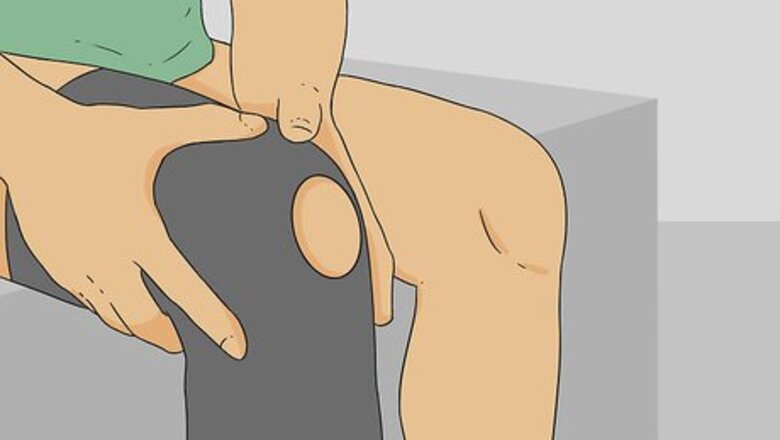
views
Putting on the Knee Brace
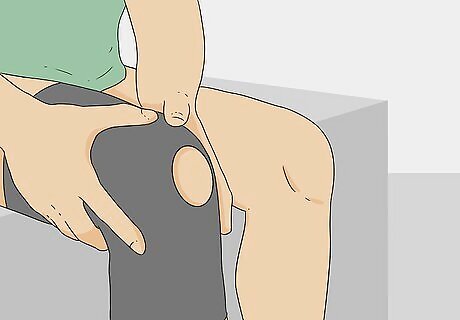
Choose the right style brace. The type of brace you end up with will depend on how severe your injury is. If you only have a mild sprain, you may able to get away with a simple compression sleeve. For more serious tears or fractures, you’ll probably need a heavier-duty hinged brace reinforced with plastic or metal. Your healthcare provider, usually a doctor or physical therapist, will usually supply you with a brace that’s best suited for your injury. There is some degree of trial and error in this process, so if your brace doesn't fit well initially, let them know and they can help you find the right size or style. It will also be important to find a brace in a size that fits you. Sizes are usually displayed on the backside of the packaging, and commercial models may be available in standard sizes. Ask your doctor about getting a second brace so that you can keep your braces clean. When you switch out braces, wash the one you just removed according to the instructions that came with the brace.
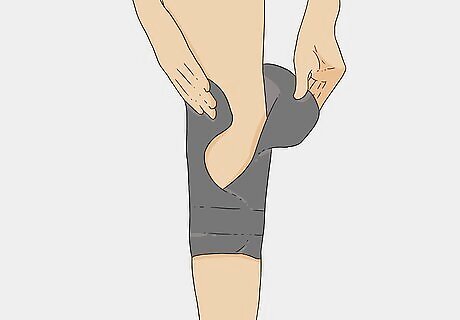
Pull the brace on over your leg. Start by rolling up your pant leg to get it out of the way. Slip your foot into the top of the brace (the area where it widens to accommodate your thigh) and out through the bottom. Slide the brace up your leg until it rests over your injured knee. If the brace you’re using is a wrap style as opposed to a sleeve style, place the inside of the pad against your knee, then wind the straps around.
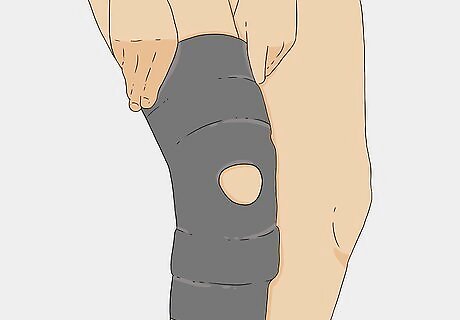
Center the brace on your kneecap. Most braces have a small hole in the front to indicate which way they should go on. When worn correctly, the point of your kneecap should be visible through this hole. This will offer greater comfort and keep the skin beneath the brace ventilated. Align the brace so that the hole doesn’t pinch or catch your skin. Make sure the brace won’t slide up or down before you secure it.
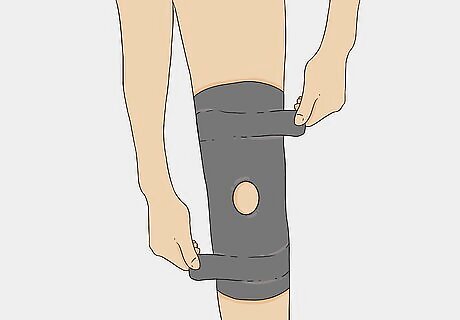
Tighten the straps. For compression sleeves, you’re done once you’ve got the brace on properly situated. If there are additional straps, guide these around the back of the brace and secure them in front using the Velcro strips. Your brace should be snug, but not too tight. You should be able to fit one or two fingers into the space between the brace and your leg. If you can’t, the brace probably needs to be relaxed a bit. Fastening the lower strap first will steady the brace and help you achieve a more stable fit.
Sporting a Knee Brace Comfortably
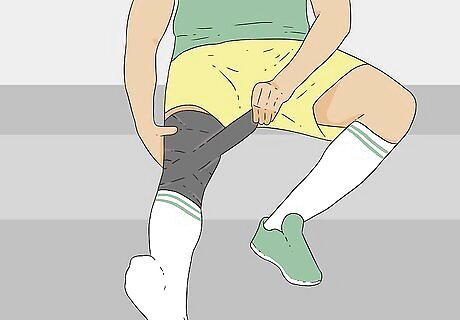
Put the brace on under other clothes. When it’s cold outside or you’re in a place with a strict dress code, like school or work, it may be necessary to keep your brace covered up. Pick out loose-fitting garments like jeans or sweatpants that the brace will fit underneath easily. This will also keep the outline from being quite as visible. Always strap on the brace first, followed by your clothes. It will work better the closer it is to the limb itself. Athletic style clothing tends to be baggy and offer a little stretch, which may be easier to manage than fitted pants.
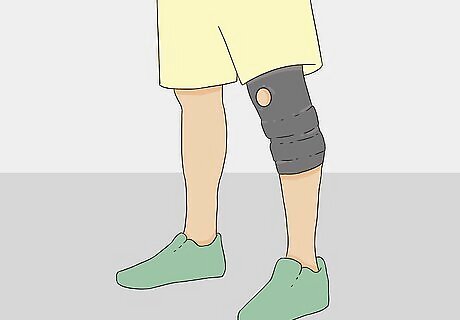
Wear shorts. Most people will find that it’s easiest to get the brace on and off with no extra material to get in the way. Shorts will provide immediate access to your injured leg while promoting airflow so you don’t get too hot and stuffy. Shorts are perfect for accommodating longer types of braces (like hinged functional braces) which sit higher up on the leg.
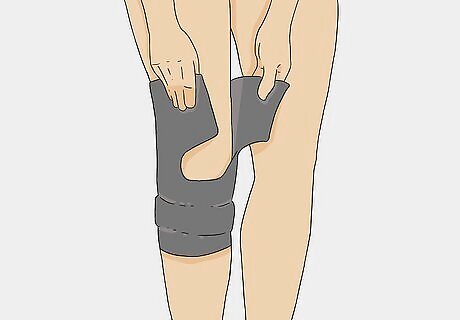
Remove the brace periodically. This will relieve the pressure around your knee and give your skin a chance to breathe. Be careful not to put too much weight on your injured leg while you’re not wearing the brace. It will probably be best to remain sitting or lying down. You should remove your brace before showering or swimming to keep it from getting wet. Make sure to speak to your doctor about whether it’s okay to go unsupported, and for how long. Removing the brace periodically helps prevent marks and further injury, so it's an important step. Follow your doctor's instructions regarding brace removal.
Safeguarding Yourself from Further Injury
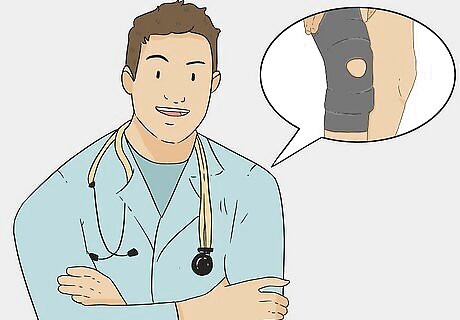
Follow the doctor’s orders. Always listen to and trust your physician when it comes to dealing with debilitating injuries. They’ll be able to tell you all the important details you need to know, like the best way to wear the brace, how long you’ll need it and what types of movements to avoid. It may be that you’ll only need to wear your knee brace for part of the day or during certain types of activities. More serious injuries may require you to wear the brace at all times. If you struggle tolerating your brace, talk to your doctor. They may advise that you can take it off at certain times, but wear it when you're sleeping or doing sedentary activities such as watching TV. Don’t hesitate to ask your doctor any questions you have about your injury or the rehabilitation process.
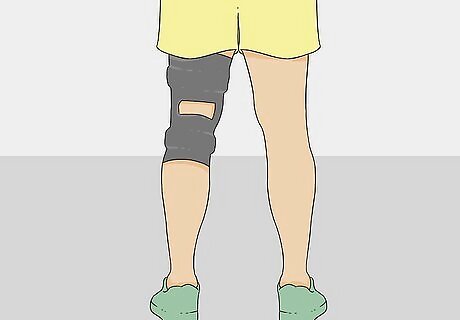
Keep your weight off your bad knee. Tread lightly when you walk to prevent placing unnecessary strain on the joint. When standing, try not to lean or shift your weight over your bad leg. Until your knee is strong enough to support your full weight, it will be unstable and vulnerable to changes in pressure. If the injury is severe, you may also need crutches to walk for the first few days or weeks. Limping is normal and even helpful, since it limits the amount of time you spend on one leg.
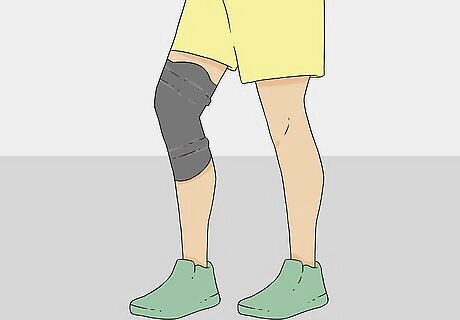
Restrict your range of motion. Knee braces are meant to keep you from bending your injured leg too much. Even so, be careful about how much movement you put your knee through while wearing your brace. Flexing or rotating the joint too much may make the injury worse. For the most part, you’ll want to keep your knee straight, relaxed and elevated while you’re trying to healing. Avoid any movement that places the joint in a painful position. Ask your doctor if it is safe for you to drive during your recovery process.
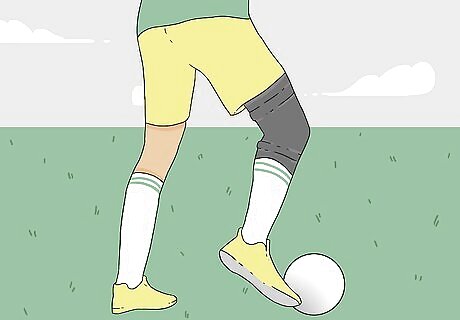
Wear the brace during any type of physical activity. Assuming your doctor has said it’s okay, you may be able to resume exercising or playing sports once your knee has begun healing. It will still be important to wear your brace correctly while active. Keep intense actions to a minimum, and avoid load-bearing exercise like weight lifting, unless otherwise instructed. Don’t push yourself too hard. If you experience any unusual pain or discomfort, stop what you’re doing immediately. A brace might also come in handy for preventing injuries in sports that frequently put the knee in vulnerable or unstable positions, such as football, soccer, hockey or gymnastics.













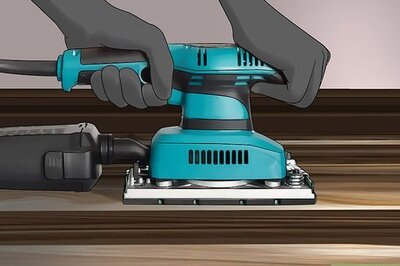



Comments
0 comment